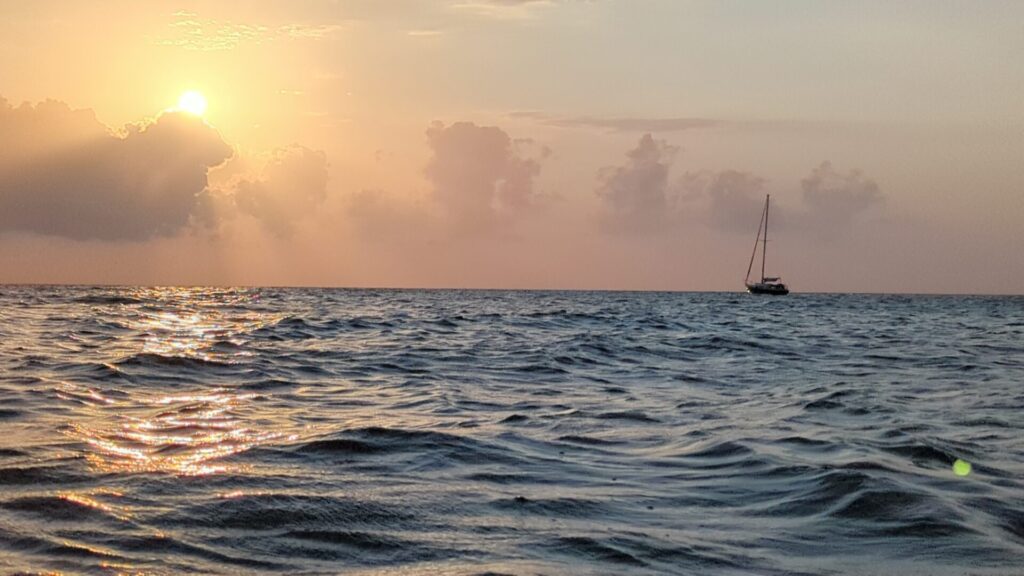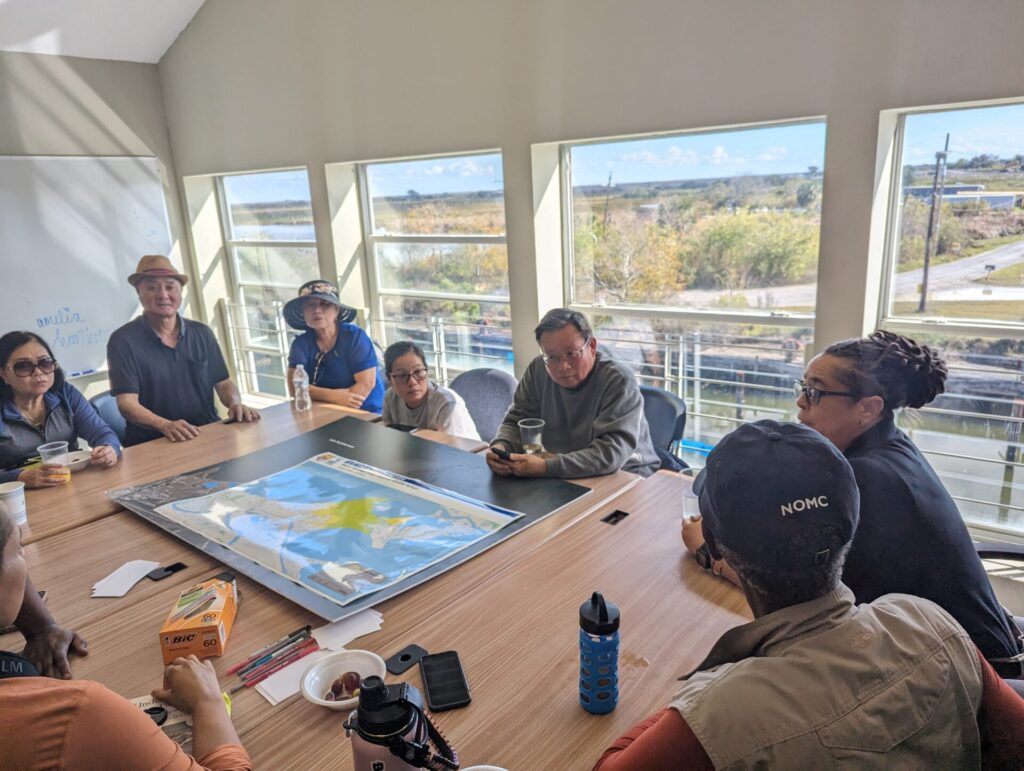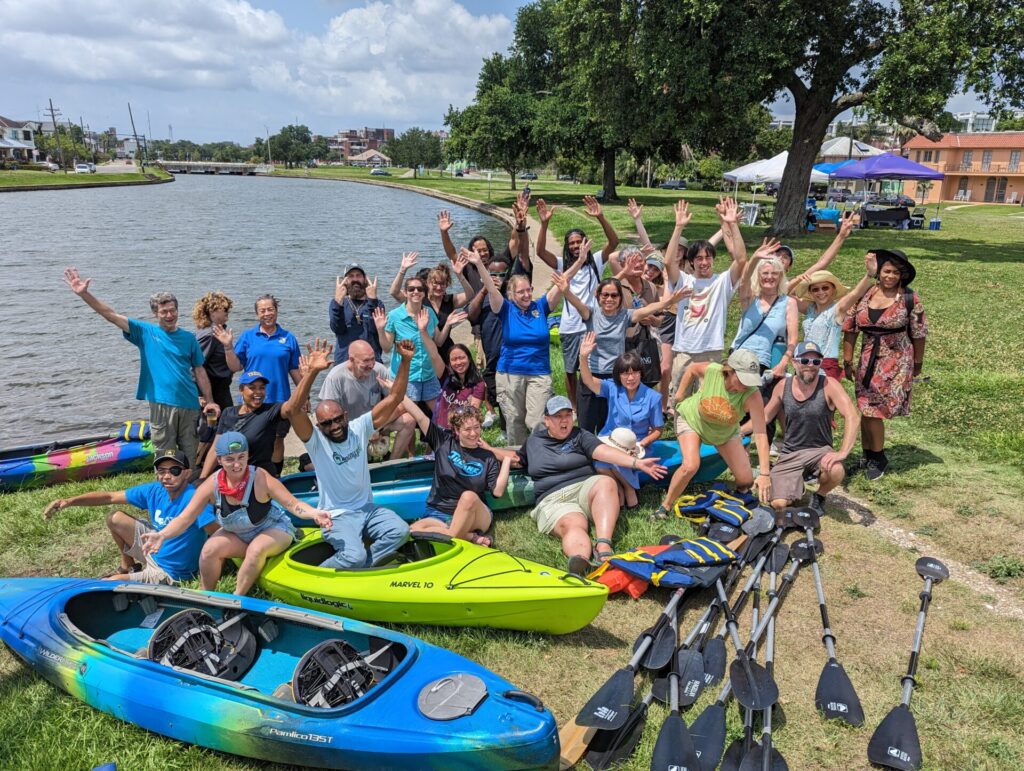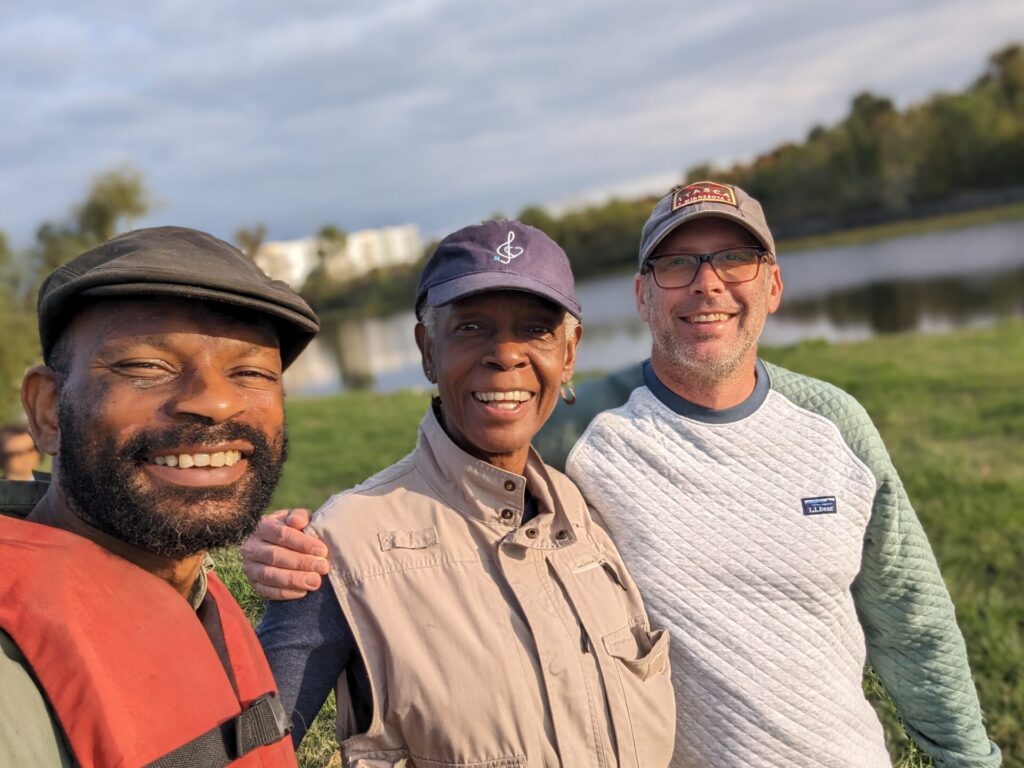Storms and Stillness
I am sitting on the shoreline looking out across the wide-open waters of Lake Pontchartrain, eyes locked on thunderstorm clouds traveling the horizon along the North Shore. It’s a relief—New Orleans was spared the worst of a tropical storm that had thrown the city into preparation mode. Just days before, I saw community members lining up for sandbags, rushing to buy water and other necessities. There is a noticeable collective pause in these moments, the city holding its breath until the storm passes.

In moments like these, Hurricane Katrina is never far from my mind. This year marks 20 years since that storm changed everything for those of us born and raised in New Orleans. I often say we weren’t just raised here—we were braised. That word holds the weight of our contributions, struggles, and resilience. People around the world come to experience the culture we and our ancestors created. And while New Orleans is rich in culture, it’s also burdened by systemic failures.
Burdens That Don’t Let Up
The truth is, we’ve weathered more than just storms. Our local institutions have been under consent decrees for violating civil rights—the Sewage and Water Board, the New Orleans Police Department, the Sheriff’s Office. Even Churchill Downs, which runs the Fairgrounds, has been fined for polluting our waterways. These are just symptoms of a deeper issue: divestment from the people who make New Orleans what it is.
Meanwhile, locals struggle to stay afloat. Housing, insurance, and utilities are expensive, and wages haven’t kept up. Public meetings happen at times working people can’t attend, and agendas drop at the last minute—barriers that disproportionately hurt the city’s minority communities. A recent disparity study confirmed what we’ve known for years: the playing field isn’t level.
Recovery, Resilience, and Reality
I helped rebuild my city after Hurricane Katrina in 2005 then again when we faced Hurricane Ida in 2021, the second-most damaging U.S. hurricane on record after Katrina. And between those storms came COVID-19. I remember Mardi Gras 2020—we were out there catching beads, but many of us were unknowingly catching COVID too.
These disasters led to the displacement of more than 100,000 people—original New Orleanians who never returned. Some found better opportunities elsewhere. Others simply couldn’t afford to come home. Mental health care has been absent from “recovery,” yet we’re labeled as “resilient” while being called “refugees” in our own country.
Out of this pain came something powerful: a culture and people like no other. We’ve added spice and soul to this nation, even though the so-called American Dream never reached us—it was blocked by Jim Crow, divestment, and now disaster capitalism.
Building Waters By-You
New Orleans is surrounded by water and lives in fear of it. That fear is rooted in our history—segregation of public waterfronts, the failed levee system, and now an aging storm drainage system and electrical grid that teeter on the brink of collapse. Without the pumps, this city is unlivable.
At Healthy Gulf, we advocate for communities across the Gulf dealing with climate change and the urgent need to adapt. I want my community to live without the constant threat of disaster—and to be fully included in shaping the solutions.
That’s why I’ve brought my organizing skills home to New Orleans East. While other parts of the city are getting attention and investment, New Orleans East is left waiting. Its residents, largely Black, Vietnamese, and Latinx, live on flood-prone land while wealthier areas are prioritized for redevelopment.
Real change demands a different approach—one that values community knowledge, builds shared experience, and works from the ground up. We formed a coalition called Waters By-You with partners including Civic Studio, SONG CDC, Batture LLC, Coastal Environmental Services, New Orleans for Lincoln Beach, and Healthy Gulf. Together, we’re working to rewrite our relationship with water.

Lifting Up Living Experts
We started by creating a cohort of community members from New Orleans East—people who are often treated as checkboxes in public engagement processes. Our model treats them as Living Subject Matter Experts. They’re compensated, respected, and directly shape the work we do.
We took this group kayaking on Bayou St. John, a natural canal that’s been transformed into a community asset. On those waters, we shared stories and imagined what could be possible back home in New Orleans East. Over six months, our cohort studied water quality, canal ecosystems, stormwater systems, and community farming. The experience ended with a community-designed pilot project for a canal in the Vietnamese community of New Orleans East.

Creating a Community Water Plan
Building on this success, we launched the Waters By-You CBO Cohort with funding from the Greater New Orleans Foundation. This multicultural group shared stories, food, and visions for the future. We provided translation to ensure everyone could speak in their own language—something too often overlooked.
The cohort culminated in an Open Studio at Joe Brown Park. We toured local waterways by canoe and kayak, and worked together toward creating the New Orleans East Community Water Plan—a living document rooted in community-led solutions.
Vision. Strategize. Implement. Repeat.
Our theory of change is circular: Vision, Strategize, Implement, and Repeat. This framework guides the Water Plan, which includes living shoreline projects outside the levees, and transforming canals within the levee system. Lincoln Beach, a historic landmark, is being redeveloped with strong community input and is expected to reopen in 2027. Inside the levees, our canal project has already kicked off with water quality testing and the planting of 26 trees in partnership with NOLA Tree Project.
We’re working closely with the Sewage and Water Board of New Orleans to move this forward. These projects will reduce pollution, lower flood risks, improve property values, and—most importantly—reconnect communities.
A Watershed Moment
Now, our Waters By-You coalition is back in vision mode, reflecting on what we’ve achieved and refining our strategy with the lessons we’ve learned.
We are surrounded by water—but it doesn’t have to drown us. It can sustain us, connect us, even heal us. If we treat communities as partners, not obstacles, and center those who’ve made this city a hub of culture and creativity all while carrying it through crisis after crisis, then we have the power to shape a future where New Orleans East isn’t left behind—it leads.

